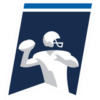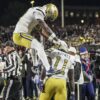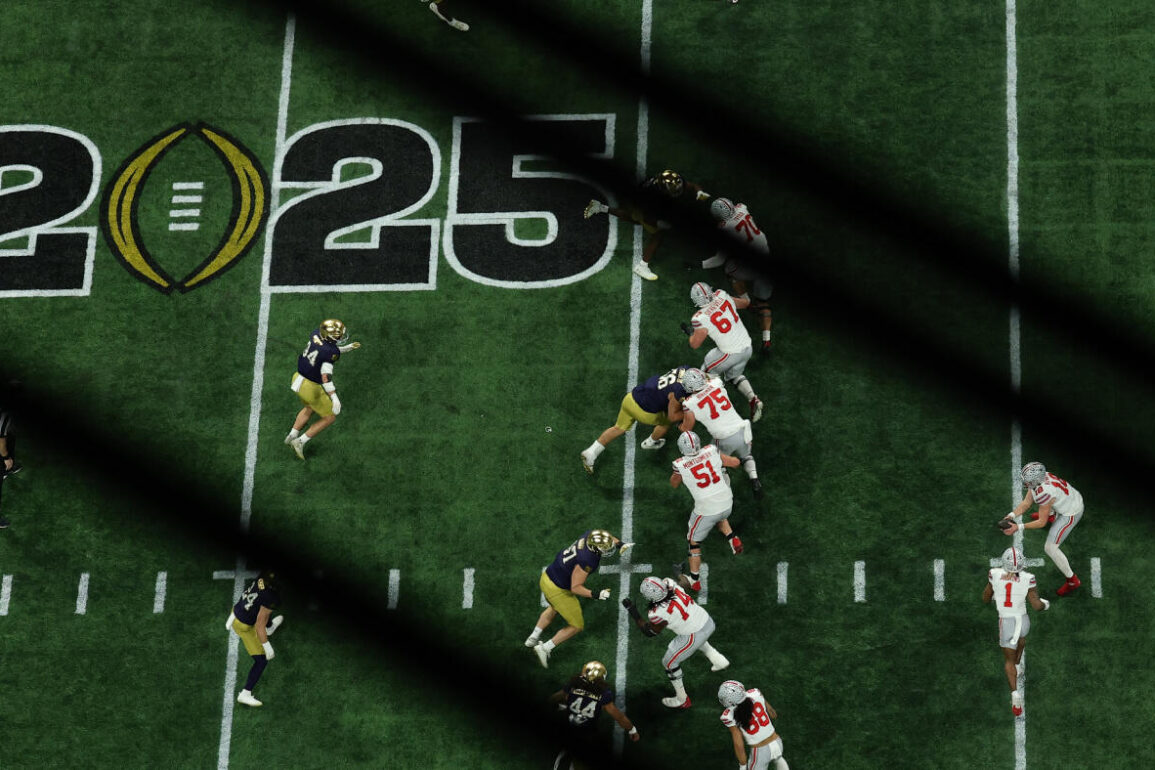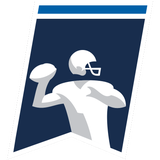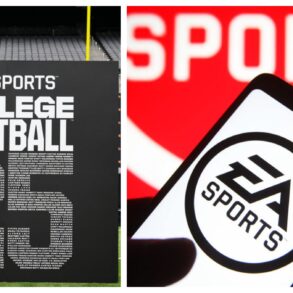The House v. NCAA settlement was officially ratified on Friday, clearing the way for universities to directly pay athletes starting in 2025. The settlement is expected to formally take effect on July 1, 2025, after it was approved by Judge Claudia Wilken of the United States District Court for the Northern District of California.
This settlement marks one of the greatest shifts in the history of college athletics by paving the way for formalized pay-for-play for the first time ever. The NCAA cleared several rules banning the practice in the lead-up to the settlement, and the new reality is now here.
So how will players be paid, and what impact will this have on the structure of college football heading forward?
How will players be paid?
Starting in 2025, colleges will be able to opt into revenue sharing with athletes. Athletic departments will be allowed to use their own funds to pay players, with a cap expected to hover around $20 million annually per school. That figure is intended to cover all athlete compensation across varsity sports — not just those that generate revenue.
The number represents approximately 22% of average athletic department revenue across power conference athletic departments. The settlement estimates that the total cap will start at around $20.5 million per school in 2025-26 and could rise to nearly $33 million per school in the next decade. Between the revenue sharing, scholarships and other athletic benefits, the NCAA believes that compensation to athletes could push close to 50% of athletic revenue in many athletic departments.
There are few guidelines in place for how the money should be distributed across sports. The expectation is that more than 70% of the funds — around $15 million — will go to football at power-conference schools. However, individual schools have the discretion to allocate funds as they choose. For example, Kentucky or UConn could decide to spend 50% of their budget on men’s basketball. Non-football schools in conferences, like the Big East, could gain a major advantage when funding other programs.
It remains unclear how Title IX will factor into the model, though at least some funds will likely be directed toward women’s sports. While players will be compensated directly for participating in college athletics, potentially through contracts worth seven figures or more, they still won’t be classified as employees. Instead, their compensation is expected to resemble that of independent contractors.
Which schools will be eligible?
Any NCAA schools that opted into the House settlement will be allowed to participate in revenue sharing, regardless of level or funding. Schools in the Big 12, Big Ten and SEC have all confirmed that they will pay out the full $20+ million rev share each season. The AAC notably is requiring schools to rev-share $10 million with their athletes over the next three years. Sacramento State, an FCS school hoping to transition to FBS, also intends to share revenue. Any school at any level of the NCAA can technically opt into the agreement as long as they in exchange follow the terms of the settlement. Plenty of FBS schools, however, will forego the major new expense.
Who will administer the new sport?
In the wake of the settlement, the Power Four conferences will take over regulation and enforcement of player compensation issues. They plan to create a new organization called the College Sports Commission, and will hire a CEO soon after the settlement. Power conference schools will be pressured to sign onto the new organization or risk expulsion from their conferences.
The CSC will be in charge of enforcing the upcoming salary cap and working with Deloitte to create the NIL clearinghouse. Additionally, they will police and enforce punishments for circumventing the salary cap or improper athlete compensation.
The decision to move player compensation to the CSC was spurred by the plaintiffs in the House case. The NCAA will continue to focus its enforcement efforts on its traditional issues heading forward, including player eligibility, academics, competition and a variety of other topics.
Can players still sign school NIL contracts?
The new agreement will allow players to sign outside contracts. However, a new wrinkle requires NIL contracts to be sent through a clearinghouse run by Deloitte to ensure “fair market value” based on an actual endorsement. For example, a rotation offensive lineman could potentially make six figures in the NIL era. While they will still be allowed to do that with a revenue-sharing contract, future NIL contracts are expected to be far more stringent. Additionally, the NCAA has the right to prohibit NIL compensation from a group it classifies as “Associated Entities or Individuals,” which would seem to mean boosters.
Take a player like Cooper Flagg at Duke. His brand value would be considered high for Duke, which could allow the school to pay him for an endorsement without pulling from their revenue sharing money. Notably, Texas coach Steve Sarkisian claimed Quinn Ewers did not take any money from their collective, instead signing endorsement contracts to claim his millions.
Per reports, Deloitte told ACC officials that 90% of existing NIL contracts with public companies would have been approved. More than 70% of deals with booster collectives would have been denied.
The rule is intended to prevent schools from using fake NIL deals to circumvent the salary cap. However, the likelihood of this is highly dependent on whether the Deloitte-run clearinghouse will have any teeth. At least one high-profile sports lawyer has argued for athletes to refuse to disclose NIL deals to the clearinghouse. It remains to be seen how the NCAA will attempt to handle a punitive case of cap circumvention.
The race to keep up with $40 million rosters is shaking college football
John Talty
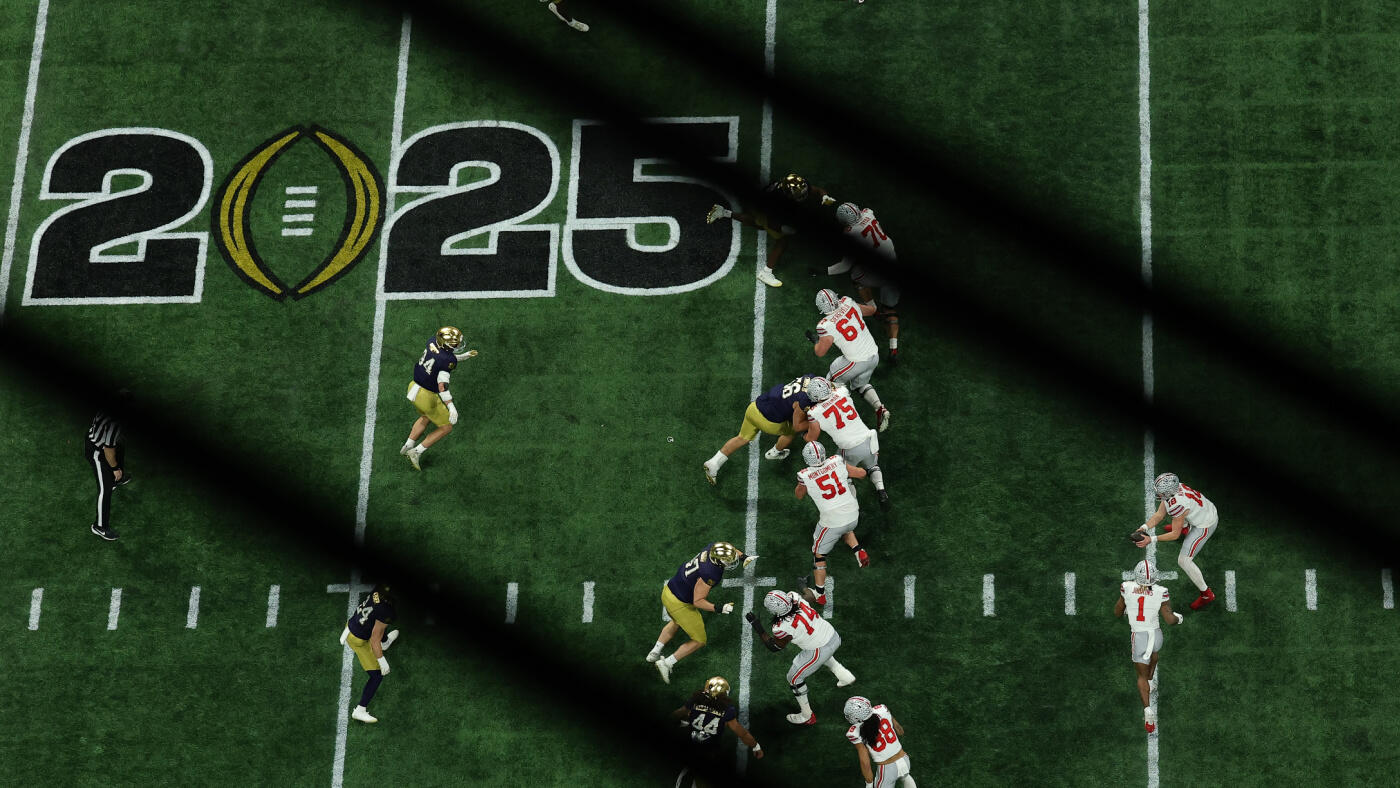
What will happen to collectives?
There’s no one consensus answer on the future of collectives; every school will handle them differently. Some will sunset their collectives and move all operations in-house. Others will use third-party collectives as a support tool for services like connecting athletes with outside endorsements or financial education. Different collectives have different relationships with their respective schools.
Will rev-share contracts be binding?
The short answer is — no one knows. Arkansas became the first school to publicly hire an attorney to enforce conditions on an NIL contract when quarterback Madden Iamaleava opted to transfer to UCLA. According to CBS Sports’ Brandon Marcello, Iamaleava’s deal requires a buyout of 50% of the remainder of his contract should he transfer.
Earlier this offseason, Wisconsin lost defensive back Xavier Lucas to Miami and similarly claimed that he was flaunting a two-year binding revenue sharing contract with the school. At this point, no formal legal challenge has been filed. Lucas is now on the roster at Miami.
The binding nature of contracts could be a key complication still remaining for the pay-for-play era. It could soon be addressed by the courts.
Is this the end?
Even though the House v. NCAA settlement is coming down, it doesn’t solve the biggest remaining questions around contracts, athlete movement, eligibility, NCAA enforcement power or a plethora of other issues. Key athletics leadership has consistently gone to Washington, D.C., to lobby for federal legislation.
Additionally, former Alabama coach Nick Saban and Auburn coach Tommy Tuberville (now a senator) have spoken to president Donald Trump about an executive order to help clarify rules. Trump has proposed a presidential commission to discuss college football issues, though it has not come to fruition. However, the House settlement will at least bring a backdrop for any solutions to be written on.
This post was originally published on this site be sure to check out more of their content.


